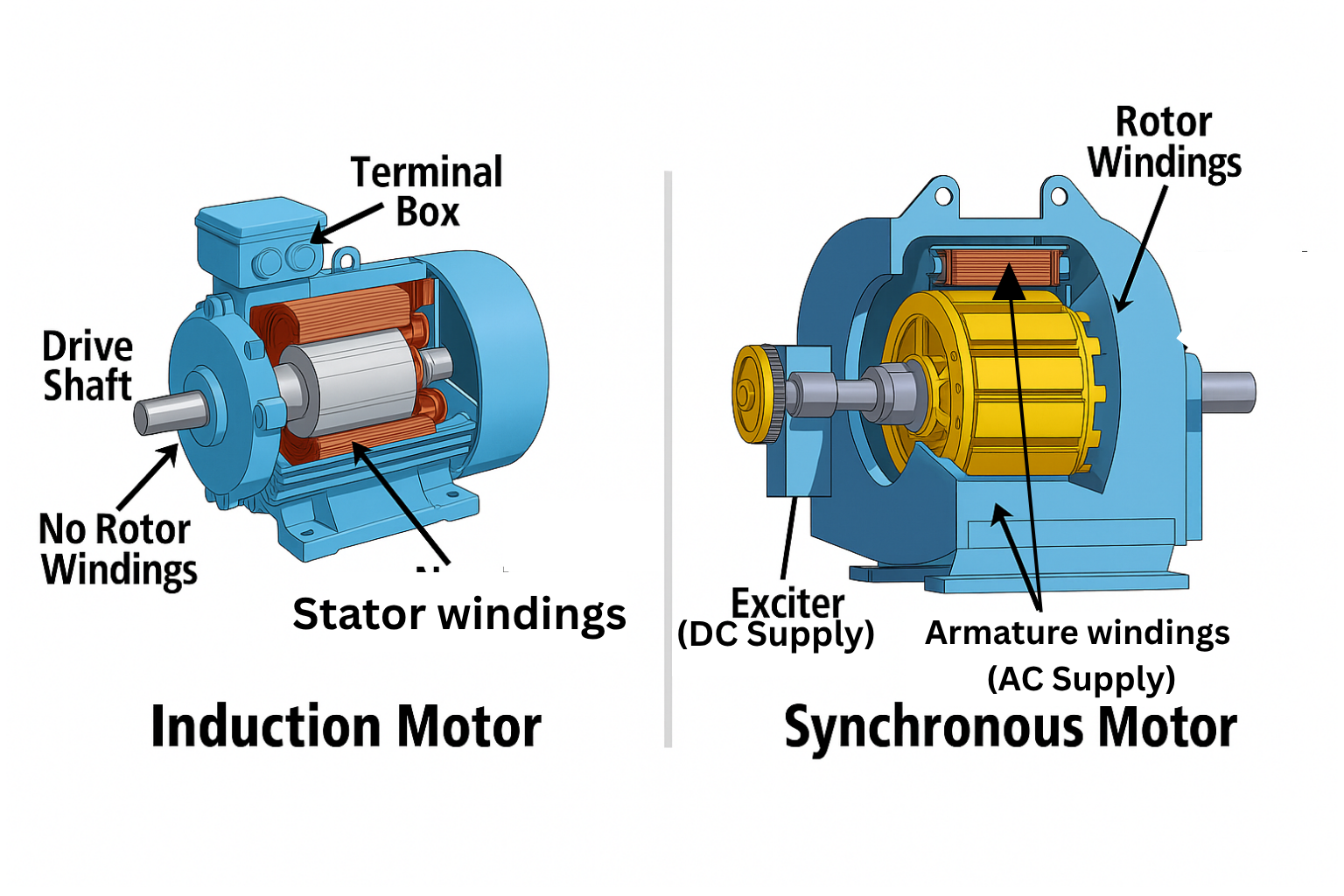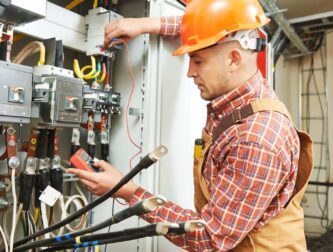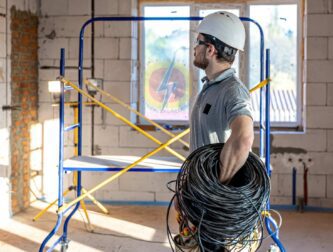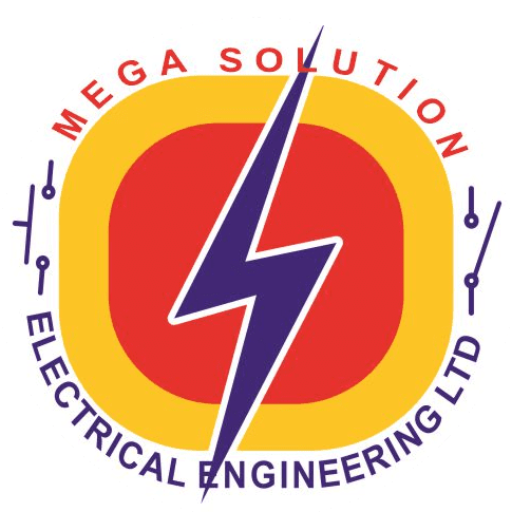Home / Blog Posts / The Difference between Neutral and Earthing
In the realm of electrical systems, two terms are often used interchangeably, yet they serve distinct purposes: neutral and earthing (or grounding).
While both are crucial for the safe operation of electrical circuits, misunderstanding their roles can lead to safety hazards and equipment malfunction. This article aims to clarify the difference between neutral and earthing, shedding light on their unique functions within electrical systems.
The neutral wire is an integral part of an electrical circuit. it provides a return path for the current to flow back to its source. In most homes, the neutral wire connects to the neutral bus bar in the main electrical panel, which is linked back to the transformer’s neutral point. This setup allows the current to complete its circuit, enabling the efficient distribution of electricity throughout the home.
Earthing, on the other hand, is a protective system designed to carry current only during abnormal or fault conditions. It is connected directly to the earth or ground and is not a part of the regular circuit flow. The purpose of the earth wire is to provide a safe exit path for electricity if there’s a fault. Fault like live wire touches the metal body of an appliance. In that moment, the earth wire conducts the stray current away from you and into the ground. And it triggers the protective device such as an RCD or circuit breaker to disconnect power.
One of the key misunderstandings is whether earth and neutral are the same. This happens because in some distribution boards, especially the main panel, neutral and earth are bonded or connected.
However, they perform distinct roles. The neutral wire carries electricity back to the source and may have voltage under normal conditions. Whereas the earth wire is there only for safety and ideally should never carry current unless a fault occurs. This is why touching a live-neutral system can be dangerous, while a properly earthed system reduces the risk of electrocution.
It is also important to know that neutral and earth should never be used interchangeably. Using neutral as earth, or earth as neutral, creates severe safety hazards. If the neutral wire breaks or becomes loose, any appliance or metal part connected to it may become live. That leads to serious electric shocks. Earth is not designed to carry continuous current, so relying on it instead of neutral could also cause fires.
Sometimes, people ask why there is voltage between neutral and earth. This can happen due to voltage drop along the neutral wire if there’s a heavy load, or if the grounding system is poorly designed. A small voltage difference is normal, but a large one may indicate a problem that requires immediate inspection.
In some systems, the neutral is grounded at the transformer to stabilise the system voltage and allow protective devices to work properly. However, this doesn’t mean neutral and earth perform the same function or should be connected together at every point in the system.
When current flows through the neutral wire, it’s doing what it’s designed for. But if you find current in the earth wire under normal conditions, that’s a red flag for a possible wiring error or ground fault.
Earthing plays a critical role in electrical safety. Its primary job is to prevent electric shock by safely directing fault currents into the ground. For instance, if a live wire touches the casing of an appliance, and that casing is earthed, the fault current quickly flows through the earth wire, bypassing your body. This immediate diversion causes protective devices like fuses or RCDs to trip, cutting off power and preventing injury or fire.
Proper earthing ensures that the metallic parts of appliances and enclosures do not become live in the event of insulation failure. Without it, touching such surfaces could be fatal. This is especially important in homes, offices, and industrial settings where people regularly interact with electrical equipment.
Another benefit of earthing is that it protects equipment from damage due to voltage surges, such as those caused by lightning or switching operations. By providing a low-resistance path for excess voltage, earthing prevents these surges from reaching and damaging your appliances or causing fire.
Earthing also helps stabilise voltage in a power system. By keeping the potential of all non-current-carrying parts at earth level, it ensures uniform voltage across the system and minimises unexpected shocks.
In electrical installations, earthing systems vary depending on whether you’re using a TT, TN, or IT system. In each of these, the way neutral and earth are handled changes slightly, but the core principle remains the same: the earth wire is always for safety, and the neutral is always for circuit completion.
At the main distribution panel, the neutral and earth may be bonded together once to establish a reference to ground. However, in sub-panels or branch circuits, this connection should not be repeated, as it may lead to circulating currents on the grounding conductor, posing safety risks.
When designing or inspecting an installation, always test the earth resistance to ensure it meets safety standards. A poor earthing system can result in delayed tripping or even complete failure of protective devices during a fault, leaving people and property at risk.
The neutral wire carries current under normal operating conditions as it completes the circuit. However, the earth wire is designed to carry current only under fault conditions, such as when there’s a short circuit to the earth. So, while both can carry current, they serve different purposes and operate under different conditions.
We need both neutral and earthing to ensure safe and reliable operation of electrical systems. The neutral wire provides a return path for the current, while the earth wire provides a safe path to ground, protecting against electric shock and equipment damage
No, we cannot use neutral as earth or vice versa. The neutral wire is designed to carry current under normal conditions, while the earth wire is designed for fault conditions. Using them interchangeably can compromise safety and lead to equipment damage or electric shock.
If neutral and earth are interchanged, it can lead to a range of problems, including electric shock, equipment damage, and even fire. The earth wire is designed to be at zero volts, and interchanging it with the neutral wire can create a shock hazard.
Earthing protects against electric shock by providing a safe path to ground for fault currents. When a fault occurs, the earth wire directs the current to ground, tripping the circuit breaker or fuse and disconnecting the power supply.
The neutral wire plays a crucial role in completing a circuit by providing a return path for the current. It allows the current to flow back to the source, enabling the circuit to function.
The neutral wire carries voltage under normal operating conditions because it is part of the circuit. However, the earth wire is designed to be at zero volts, as it is connected directly to the earth.
Some voltage between neutral and earth is normal, typically due to voltage drops in the neutral wire. However, high voltages between neutral and earth can indicate a problem, such as a faulty installation or a neutral-earth fault.
Current flows in the earth wire under fault conditions, such as when there’s a short circuit to earth. This is designed to trigger the circuit breaker or fuse to disconnect the power supply.
In a typical distribution board, the neutral and earth wires are connected at the main bonding point, usually near the main switch or circuit breaker.
The neutral is typically grounded at both the transformer and the consumer end, although this may vary depending on local electrical standards and practices.
Improper earthing or neutral disconnection can lead to electric shock, equipment damage, and even fire. It is essential to ensure that earthing and neutral systems are properly installed and maintained.
Bonding earth and neutral at the main panel ensures that the system is referenced to earth, providing a safe and reliable operation. Bonding at sub-panels is not recommended as it can create multiple paths to ground, potentially causing problems.
You can test whether neutral and earthing are correctly installed by performing checks such as measuring voltage between neutral and earth, testing for continuity between earth and the grounding point, and verifying that the earthing system is properly connected.
In single-phase systems, the neutral wire provides a return path for the current, while in three-phase systems, the neutral wire may not be required. Earthing systems also differ between single-phase and three-phase setups, with three-phase systems often requiring more complex earthing arrangements.
TN, TT, and IT are earthing system classifications defined by IEC. TN systems have a direct connection between neutral and earth at the source, while TT systems have a separate earthing point at the consumer end. IT systems do not have a direct connection between neutral and earth.
A ground fault can cause current to flow in the earth wire, triggering the circuit breaker or fuse to disconnect the power supply. The neutral wire may also be affected, depending on the type of fault and the earthing system.
RCDs detect imbalances between the live and neutral wires, which can indicate a fault to earth. They can trip the circuit breaker or alarm to alert of a potential problem.
Both neutral and earthing are crucial components of any safe electrical system, but they are not the same. The neutral wire is an active part of the current-carrying circuit, while the earth wire is purely a safety feature. One carries current under normal operation; the other only carries current when there’s a fault. Neutral completes the circuit. Earthing protects life and equipment.
Confusing these two can lead to dangerous wiring practices. Understanding their differences helps in proper installation, maintenance, and fault detection. It also empowers professionals and learners alike to make informed decisions and stay safe.
So next time you’re looking at a cable or a distribution board, remember: neutral is the silent worker keeping your electricity flowing, while earth is the silent guardian keeping you safe.
Trustindex verifies that the original source of the review is Google. Thanks for solving our electrical problem so fast, coming all the way to Cantonments.Posted onTrustindex verifies that the original source of the review is Google. Mega Solution demonstrates exceptional expertise in genset systems. Their professionalism, technical proficiency, and industry experience set them apart. I highly recommend their services to anyone seeking reliable and knowledgeable partners in this field.Posted onTrustindex verifies that the original source of the review is Google. This best experience I had in a while, Richard provided all the help I was looking for. Thank you, this is a 10 Stars service!Posted onTrustindex verifies that the original source of the review is Google. Best electrical company in GhanaPosted onTrustindex verifies that the original source of the review is Google. Best Electrician in Ghana | best electrical engineer at good location | over 30 years experience | good electrical service. Thank you so much. I’m very happyPosted onTrustindex verifies that the original source of the review is Google. Wonderful work you have to tryPosted onTrustindex verifies that the original source of the review is Google. Do you have any generator related issue(s) at home or at your work place? Do you need that expert who can solve all your issues for you? Look no further - Mega Solution is your answer.
When searching for a reliable electrician, call us at +233 24 415 1232 We specialize in electrical repairs, indoor and outdoor lighting installations, panel upgrades, and even hot tub wiring!
No matter urgent any electrical repairs seem, it’s never okay to attempt to handle them on your own. Trying to take care of electrical problems without professional training is extremely dangerous. If you or someone else aren’t hurt during your attempt, there’s still a chance that you’ve left something undone that poses a huge risk to you, your home, or your family.
mega solution electrical Power and wiring audit in Accra, Ghana knows what a hassle any electrical problems can be, which is why we’ll always respond to any requests for service as quickly as possible. And because all of our technicians are licensed, background checked, and professionally trained, you’re guaranteed to receive the best quality service and workmanship available when you call us. We can assist with all your electric needs including:
| M | T | W | T | F | S | S |
|---|---|---|---|---|---|---|
| 1 | 2 | 3 | 4 | 5 | 6 | 7 |
| 8 | 9 | 10 | 11 | 12 | 13 | 14 |
| 15 | 16 | 17 | 18 | 19 | 20 | 21 |
| 22 | 23 | 24 | 25 | 26 | 27 | 28 |
| 29 | 30 | 31 | ||||

Learn how to read and understand circuit breaker ratings like In, Icu,

Discover the key differences between synchronous and induction motors.

What safety measures you need to put in place in your industry and why

As energy bills continue to soar, households and businesses alike are

Dreaming of a Career as an Electrician in Ghana? Here's How to Make It

Characteristics of Top Electricians Before starting your search, it's


